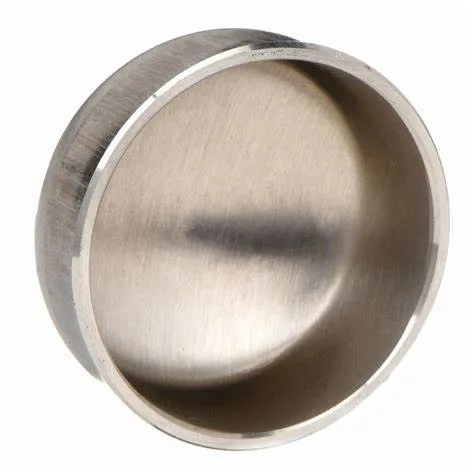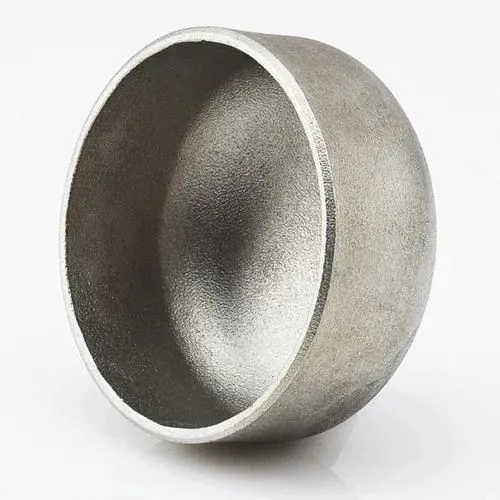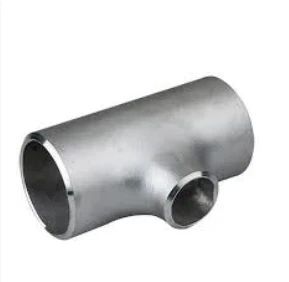JIS B2311 is a Japanese Industrial Standard that covers butt-welding pipe fittings, including caps used in piping systems. Butt-welding caps serve the purpose of closing the end of a pipe, providing a seal to prevent leakage or contamination. Here is an introduction to JIS B2311 butt-welding caps:
- 1. JIS B2311 Standard:
- - JIS B2311 standard specifies the requirements for the design, dimensions, materials, manufacturing, and testing of butt-welding fittings, including caps, in piping systems.
- - The standard ensures that caps produced in compliance with JIS standards meet quality standards and are compatible with other piping components.
- 2. Butt-Welding Cap:
- - A butt-welding cap, according to JIS B2311, is a fitting designed to cover and seal the end of a pipe securely, offering protection and maintaining the integrity of the piping system.
- - Caps are used in situations where the pipe end requires closure, either permanently or temporarily, to prevent leakage, contamination, or to provide a finish to the system.
- 3. Material and Construction:
- - Butt-welding caps under JIS B2311 specifications are available in various materials such as carbon steel, stainless steel, and alloy steel to meet different application requirements.
- - These caps are manufactured using standardized construction methods to ensure a strong and leak-free connection when welded to the end of a pipe.
- 4. Application and Benefits:
- - Butt-welding caps find applications in various industries, including oil and gas, chemical processes, water treatment plants, and more where pipe endings need to be capped securely.
- - Caps provide protection to pipe ends from environmental elements, prevent contamination, and help maintain the cleanliness and integrity of the piping system.
- 5. Installation and Welding:
- - Proper installation practices, including correct alignment, preparation of the pipe end, and welding techniques, are essential when installing butt-welding caps to ensure a tight and leak-proof seal.
- - Welding is a common method for attaching caps to pipes, providing a secure and permanent closure that can withstand pressure, temperature variations, and fluid flow within the system.
- In summary, JIS B2311 butt-welding caps are crucial components used in piping systems to seal and protect the end of pipes securely. These caps conform to standardized requirements to ensure quality, reliability, and compatibility within industrial applications where pipe closure and protection are necessary.
What Is a Butt Welding Cap and How Is It Used in Industrial Piping?
In industrial piping systems, end-of-line sealing and branch closures require robust solutions. A butt welding cap serves as a critical component for terminating pipes securely. By providing a seamless, welded closure, this fitting maintains system integrity, prevents leaks, and supports compliance with industry standards.
What Is a Butt Welding Cap?
A butt welding cap—also called a pipe end cap or buttweld end cap—is a round fitting designed to close off the end of a pipe. It’s manufactured to match the pipe’s outer diameter and schedule, with either a hemispherical or flat face. To install, both the pipe end and cap are beveled to form a V‑groove, enabling full‑penetration, fusion welds. Common materials include carbon steel, stainless steel, nickel alloys, and other engineered grades, chosen to satisfy pressure, temperature, and corrosion‑resistance requirements.
How Is Butt Welding Cap Used in Industrial Piping?
Butt welding caps find application across oil & gas, petrochemical, power generation, water treatment, and general process industries for both permanent and temporary closures. During hydrostatic testing, technicians install caps to seal off sections of piping while monitoring for leaks. In new construction or retrofit projects, caps terminate branch lines, future tie‑in spools, or dead‑end mains until system expansion. Welders prepare each joint by cleaning and beveling surfaces, aligning the cap precisely, and executing a root pass followed by filler passes per the qualified Welding Procedure Specification (WPS). Post‑weld heat treatment and non‑destructive examination (NDE)—such as radiography or ultrasonic testing—verify weld integrity and compliance with ASME B16.9 and related standards. Additionally, temporary caps enable safe isolation during maintenance, allowing for segment testing and dewatering under regulatory protocols.
Benefits and Best Practices
Butt welding caps offer a smooth‑bore transition that minimizes flow disruption and stress concentration. Their full‑penetration welds deliver exceptional structural strength and leak resistance. To optimize performance, engineers should:
Select caps with matching material grades and wall thicknesses
Adhere to proper bevel angles and joint fit‑up tolerances
Follow qualified WPS protocols rigorously
Consider cladding or protective coatings in corrosive environments to extend service life
Regular inspection and thorough documentation ensure long‑term reliability and safe operation under demanding conditions.
Butt welding caps are indispensable components for achieving durable, leak‑proof pipe terminations in a wide range of industrial applications.
Butt Welding Cap FAQs
What is a butt welding cap?
|
What materials are commonly used?
|
What standards govern butt welding caps?
|
How are butt welding caps installed?
|
Where are butt welding caps typically used?
|
What are the advantages of threaded caps?
|
















